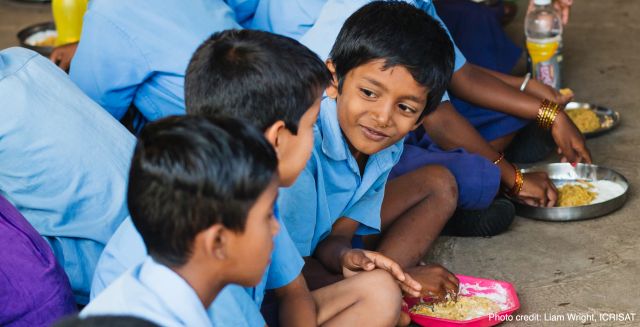Findings from a recently published feeding study with 1,500 children in Karnataka suggest that millet-based mid-day meals can boost growth by 50% in just three months. Children rated the meals, which were designed by scientists and chefs and included little millet as a rice substitute, over 4.5 on 5 for taste.

The findings of the study were released jointly by Prof Ramesh Chand, Member, NITI Aayog, and Dr Ashok Dalwai, Chair, Empowered Body, Doubling Farmers’ Income, Government of India, in New Delhi on Wednesday. The results were presented at the Tasting India Symposium later in the day.
“This is an example of not only a science-backed nutrition solution, but also a link between agriculture and nutrition. It is important now that we achieve mainstream consumption of millets and that they are not just for the elite,” said Prof Ramesh Chand.
Dr Ashok Dalwai emphasized, “Making it profitable for farmers to grow nutritious foods like millet has to be a key part of the Doubling Farmers’ Income vision and millets are important in the rainfed areas for farmers to cope with climate change and water scarcity.”
This Smart Food study, ‘Acceptance and impact of millet based mid-day meal on nutritional status of adolescent school going children in a peri-urban region of Karnataka state in India,’ published in the journal Nutrients, was undertaken by The Akshaya Patra Foundation and the International Crops Research Institute for the Semi-Arid Tropics (ICRISAT). Early adolescent school children in four villages—Thathaguni, Kagallipura, Allahali and Chensandra which are located around Bengaluru— participated in the study. Growth was assessed using anthropometry measurements, while sensory evaluations were made to determine acceptability.
“It is not good enough just to say we are going to add millets into the meal,” said Dr S Anitha, a nutritionist at ICRISAT and the study’s corresponding author. “The type of millet, its variety, how it is cooked and the foods it is combined with are some of the key elements that can make a difference in nutrition. For instance, the amount of iron available in a meal can be doubled by selecting the right variety of millet. This is the first known scientific study of millet based meals in a school feeding program.”
The researchers gave the study group children meals including idli, khichdi, upma and bisibella bath in which rice was replaced by pearl millet (bajra), ragi (finger millet) or little millet (kutki). The anthropometric measurements at the end of the feeding program were compared with that of control group children who consumed fortified rice with sambar.
“Akshaya Patra is always looking for ways to improve nutrition in mid-day meals. The millet meals were exceptionally successful and were really liked by the children. We appreciate the Karnataka state government’s support, and with this positive result, we now hope this will garner the support needed to make nutritious millet based meals available to our future generations,” added Ajay Kavishwar, Head of Research at The Akshaya Patra Foundation.
“These results and guidelines developed from the study are equally important for any scheme addressing malnutrition or general health diets–whether that of governments, NGOs or private sector processors or caterers,” noted Joanna Kane-Potaka, Executive Director of Smart Food and Assistant Director General of ICRISAT.
“ICRISAT holds the world’s largest collections of millet genetic material and works closely with Indian Institute of Millets Research and other partners to improve millets by developing varieties having higher nutrient levels as well as the more conventional traits like yield and resilience,” commented Dr Peter Carberry, Director General, ICRISAT.
Team SustainabilityZero











Recent Comments